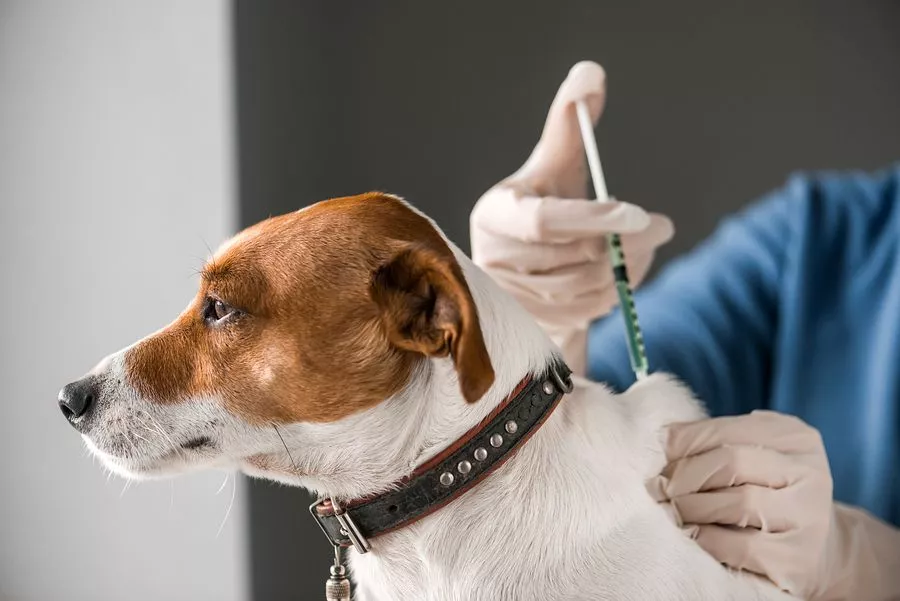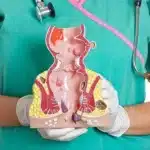What Is Rabies?
Contents
Rabies is a highly dangerous disease, which is caused by a number of viruses called ‘lyssa‘ including the rabies virus.
It is a fatal disease, but good thing is that it is very easy to prevent, It is mainly spread from infected dogs, but may also spread from bats, cats, rabbits, monkeys, etc.
Rabies is also known as hydrophobia because in rabies people also fear water, and hydrophobia is a last-stage symptom of rabies.
Each year, rabies causes approximately 59,000 deaths worldwide, but most rabies deaths in people around the world are caused by dog bites.
And kills about 20,000 people every year in India, which is responsible for about a third of the 61,000 global human deaths due to rabies (1)

2. How Does Rabies Progress in the Body?
If an infected animal bites a person, first the virus will enter the body and multiply, then spread by nerve ends to the central nervous system.
Where it causes inflammation. This inflammation leads to symptoms of the disease. And most rabies deaths occur in children.
3. How Does It spread?
It can spread from infected animals to humans or other animals by saliva, bite, fresh open wound, scratch, and happen by coming in contact with their feces and urine.
The virus is usually present in the nerves and saliva of an infected rabid animal.
Most animals can be infected by the virus and can transmit the disease to humans. Worldwide, about 99% of human rabies cases come from domestic dogs (2).
NOTE: Then this virus damages the neurons that are used during respiration and swallowing food or any other liquid which is why a person occurs hydrophobia.
According to the CDC Bite and non-bite exposures from an infected person could theoretically transmit rabies, but no such evidence has been reported.
However, the human-to-human spread is theoretically possible via bite or saliva, but this has not been confirmed (3).
NOTE: Various environmental conditions can affect the virus causing the virus to become inactivated, such as the virus can be considered non-contagious when dried and exposed to sunlight.
4. Signs and Symptoms
The period between infection and the first symptoms is usually 1 to 3 months in humans.
However, this period can be short as 4 days to longer as 1 year, depending on the how severe case is, its location, and the amount of virus introduced.
Fear of water (hydrophobia) is the most common symptom.
Symptoms in Humans. These include:
- Fever with pain
- Tiredness
- Headache
- Burning sensation at the bite site
- Tingling
As this virus progresses, these symptoms can see:
- Confusion
- Anxiety
- Braking
- Abnormal behavior
- Insomnia
- Extreme sensitivity to bright lights, sounds, or touch
- Paralysis
Symptoms in Animals. These include:
- Can be very friendly
- Will be silent
- Some animals also show signs of madness, which they see, and they run to bite them.
- An animal that bites at everything
- Will hide
- lots of drool or saliva
- Will let you get closer, But don’t go near such animals.
5. Who is At High Risk?
There are certain situations that may put a person at a higher risk. these include:
- Living in bats populated areas
- Those who do not know about rabies, like what to do after being bitten by a dog or any other animal.
- Camping and exposure to wild animals
- Living in rural area that areas that are more exposed to wild animals and here the availability of vaccines is also less.
- Under 15 years of age.
Although, 40% of people bitten by suspected rabid animals are children under 15 years of age.
6. Diagnose
There is no suitable tool that can detect early-stage of rabies infection. the doctor usually applies these tests such as:
- Blood test
- DFAT (Direct fluorescent antibody test)
- Saliva test
NOTE: The animal also has a DFA test that looks for the presence of rabies virus antigens in the brain tissue. In humans, several tests are required.
If a person has been bitten by wild animals, doctors usually give a rabies vaccine to prevent infection before symptoms appear.
Unless the rabies-specific signs of hydrophobia are present, clinical diagnosis may be difficult.
7. Treatment of Rabies

Unfortunately, there is no specific treatment for rabies.
If you have come in contact with an infected animal or a potentially infected animal, immediately go to the nearest hospital.
And get a 5-dose intramuscular injection of ARV (Anti rabies vaccine).
Doses Duration
- The first dose is the day the animal has a bite.
- Second dose – the 3rd day
- Third dose – 7th day
- Fourth dose – 14 day
- Fifth dose – 28 day
Injection should be applied without forgetting because prevention of this disease is its treatment.
Side Effects of Vaccine
Here is the common or possible side effect of the rabies vaccine and immunoglobulin vaccine. including:
- Some people face allergic reaction
- Headache
- Soreness
- Muslce pain
- Swelling or itching in the injection area
- nausea
- abdominal pain
- Dizziness
- Hives or pain in joints
- Some time fever, after taking booster doses
If a person sees other side effects like vision change, dizziness, or ringing in the ears, talk to the doctor.
It is rarely seen that after taking the vaccine, there is a complaint of nervous system disorder, like Guillain barre syndrome (GBS).
8. Complications
It is a life-threatening infection. Left untreated, rabies can lead to coma. And if a person enters a coma death will occur in a matter of hours.
In rare cases, some people may have an allergic reaction to the rabies vaccine. (4)
9. How To Prevent Rabies?
If someone is bitten by a wild animal, so its vaccine is the only cure. Doctors give two vaccine shots as soon as possible:
- Rabies immunoglobulin
- Rabies vaccine
They both help our body to produce antibodies, which will help fight against this virus.
Also, teach kids to stay away from wild animals such as bats, wild dogs, cats, etc. And avoid contact with animals you don’t know (5).
How Can Prevent Rabies In Animals
There are several ways to prevent rabies in animals or pets.
- By giving animals a rabies vaccination up-to-date.
- Take control of your pet, if your pet is bitten by any wild animal, then talk to your veterinarian or animal doctor immediately.
- If there is an animal around your neighbor, whose behavior is not good, then call animal control, because that animal may be unvaccinated or ill.
BOTTOM LINE
Unfortunately, there is no specific treatment for rabies. That is why doctors focus on prevention and try to stop the disease right after a person is infected.
Although, 40% of people bitten by suspected rabid animals are children under 15 years of age.
If a person sees other side effects like vision change, dizziness, or ringing in the ears, talk to the doctor.


